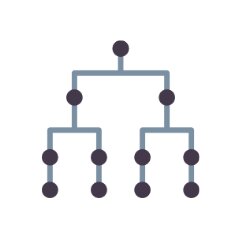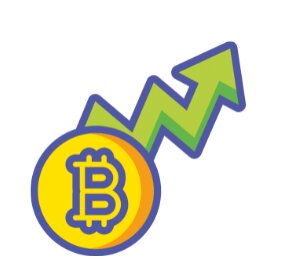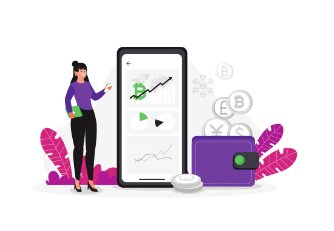Evolution of Blockchain: 1991 to 2024
Blockchain Technology is in the limelight for the last few years. And it continues to grab the attention of many. Meanwhile, this article goes through the evolution of Blockchain from 1991 to the Present. It constitutes a timeline divided into three broader categories. Early inception stage, mid-struggle stage, and the present stage of acceptance.
Content
Best-suited Blockchain courses for you
Learn Blockchain with these high-rated online courses
The Inception of Blockchain (1991 – 2008)
First, the below section covers the early-stage evolution of Blockchain from 1991 to 2008.
1991
The evolution of Blockchain technology started in 1991. When research scientists Stuart Haber and W. Scott Stornetta were working on a practical solution to keep the backup of digital documents. Afterward, they aim to make the timestamps of those documents more secure. Later, they published their first paper expressing the use of a chain to cryptographically secure blocks in order to protect the integrity of past information.
Read about: Consensus Mechanisms in Blockchain
1992

2004
In 2004 Hal Finney, a computer scientist and cryptography expert developed a system known as RPoW (Reusable Proof of Work). The system creates a transferrable RSA-signed token by receiving a non-exchangeable (or non-fungible) hash cash based on a proof-of-work (PoW) token. Above all, the protocol solved the double-spending problem. Therefore, keeping the ownership of RSA tokens registered on the trusted server. Where other nodes can verify and keep the documents integrated.
2008
Then in late 2008, a whitepaper came up named “Bitcoin: Peer-to-Peer E-cash system” by anonymous Satoshi Nakamoto. He used a hash cash PoW (Proof-of-Work) algorithm with software-based computing functions. Unlike, RPoW which uses hardware functionalities. Moreover, bitcoin introduces the concept of mining coins. It also ensures verifying the transactions among the decentralized nodes in the network.
Also, Read: How does Blockchain Work?
2009
Bitcoins are mined for a reward using the PoW algorithm by individual miners. Further, it is verified by the other decentralized nodes in the chain network.
- On Jan 3, 2009, the foundation of bitcoin settled. The first bitcoin block was mined by Satoshi Nakamoto with a reward of 50 bitcoins. Moreover, the first mined block is we call the “Genesis block of Bitcoin” today.
- On Jan 12, 2009, the first transaction of 10 bitcoins from Satoshi to Hal Finny happened.
- On Oct 31, 2009, the Bitcoin exchange marketplace launched publicly to trade bitcoins for actual money.
Furthermore, Nakamoto established the Bitcoin Talk Forum to broadcast news and information. Since 2009, the value of Bitcoin has aggressively grown. By 2012, Bitcoin reached $250 as its worth.
Above all, Nakamoto set up the system limit up to 21 million bitcoins. Currently, more than 18 million bitcoins have already been mined. Moreover, depending on the present computation resources and rate of mining, by the year 2140, all bitcoins will be mined.
However, the person or community behind this popular discovery is still unknown. The figure of Satoshi Nakamoto disappeared and passed the wisdom of their knowledge to the generation of computer scientists and developers. Ever since then we have been hearing and reading about inventions of new blockchain-based applications worldwide.
Let’s conclude the early evolution of the Blockchain era with the diagram below.
The Rise and Struggles of Blockchain as a Future Technology (2013 – 2018)
The below section covers the middle stage evolution of Blockchain from 2013 to 2014.
2013
In early 2013, Bitcoin took the lead in disrupting some economic beliefs.
- 11 million bitcoins traded with a total currency valuation of over $1 billion.
- In contrast, Thailand and China banned Bitcoins.
- Meanwhile, people restored their faith in Bitcoin, and its value touched $1,164.
Later, Vitalik Buterin, co-founder of Bitcoin Magazine, stated a need for a scripting language to develop Decentralized applications. Despite getting several disagreements on his suggestion. He started building a new blockchain-powered distributed computing platform called Ethereum.
2014
In the year 2014, the Ethereum Foundation got established by Vitalik Buterin. Ethereum became more than a cryptocurrency and a decentralized platform.

FYI, smart contracts work as a self-executing program deployed on the Ethereum blockchain network. It executes when predefined conditions are met. The smart contract development attracted numerous developers to try out decentralized applications (or Dapps).
Later, the Linux Foundation introduced Hyperledger. An open-source project to motivate the development of decentralized applications. It provides required frameworks, tools, and libraries.
2016
By the year 2016, people started to acknowledge more applications of blockchain than just cryptocurrencies.
- Bank of England started exploring blockchain for transaction settlements.
- Later, the European Central Bank (ECB) and the Bank of Japan announced a joint research push into exploring use cases on the blockchain.
- IBM revealed a futuristic blockchain strategy to deliver its cloud-based solution into blockchain-as-a-service (BaaS) offerings.
- R3 announced new distributed technology called Corda.
Corda is a permissioned distributed customizable platform exclusively for financial service needs. Here, only the parties involved in the transactions get to make decisions. However, Corda and Hyperledger do not have any native cryptocurrency. Instead, they serve as a development platform for decentralized applications.
Read about: Private Blockchain
2017
In 2017, blockchain was named “Foundational Technology” by Harward Business Review.
- Bitcoin prices surged nearly $20,000. US regulators approved bitcoin as a mainstream investment.
- Japan legalized bitcoin as a currency.
- Seven European banks took a step forward to form a digital trade chain consortium. To create a trading platform based on blockchain technology.
- By the end of the year, 15% of global banks started exploring blockchain.
2018
The beginning of 2018 turned out to be a depression for blockchain enthusiasts.
- Bitcoin value dropped to $3,800.
- Major tech giants like Google, Facebook, and Twitter banned cryptocurrency advertisements.
- South Korea banned crypto trading. However, they announced heavy investments in blockchain start-ups.
- As of good news, European Commission established the Blockchain Observatory and Forum.
- Blockchain-as-a-service (BaaS) platform got a push by Baidu.
Briefly, let’s conclude the rise and struggle of Blockchain in its evolution (2013-2018):
The Global Acceptance of Blockchain as a Potential Technology (2019 – Present)
At last, the below section covers the current timeline of Blockchain from 2019 to the Present.
2019
In 2019, People worldwide started to buy bitcoin (a popular choice) and invest in cryptocurrencies similar to their investments in the stock market and mutual funds.
- Facebook showed interest in the blockchain space and announced their cryptocurrency named Libra.
- Later, Amazon Web Services (AWS) announced the Amazon Blockchain service on its cloud platform.
- China took a lead by announcing their state-approved digital currency, and the Bank of China issued bonds on Blockchain.
- In the same year, Gibraltar United became the first football team to get paid with digital currencies.
- Reaching the end of the year made nearly 450M+ blockchain-based transactions.
In addition, Many experts distrust Libra being truly decentralized. However, Facebook entering in crypto game awakens numerous tech giants and top VCs to pull up their socks.
2020
- In 2020, Bitcoin pricing roared again with a value of $30,000.
- FinTech giant PayPal started dealing with cryptocurrencies.
- According to Global Blockchain Survey Report 2020 by Deloitte, about 40% of respondents integrated blockchain into production, and the other 55% envisioned it as their upcoming strategic plan.
- Ethereum announced the building of Ethereum 2.0. To resolve the gas issues and other significant limitations.
- Sprouting interests in merging blockchain with AI to optimize business operations.
2021
The year 2021 was a roller coaster ride for crypto investors as bitcoin value surged to $64,829.14 (highest yet) and declined to $35,000 as well.
- In March, the world’s richest man, Elon Musk, announced the acceptance of Bitcoins as payment for Tesla cars. Later, he withdrew his statement due to environmental hazards as bitcoin mining requires high computation power.
- El Salvador became the first country to accept Bitcoin as a legal currency.
Afterward, a giant wave of (Non-fungible Token) NFTs came with great earning opportunities for creators. An NFT is a digital asset such as digital art, music records, videos, or collectible that is unique and tradable. Platforms like OpenSea, one of the most popular NFT marketplaces, presented a stage for artists and traders. An intersection of Blockchain, AR/VR, and web3 gave rise to Metaverse. Several start-ups inspired by covid -19 pandemic work from home culture started working on virtual world creation.
On Oct 28, Mark Zuckerberg CEO of social network giant Facebook, renamed the company, Meta. In contrast, the cryptocurrency bill in India banned the use of cryptocurrencies as a payment system. On other hand, the idea of web3 promoted worldwide.
2022
The ongoing year 2022 started with more fame towards NFTs and Metaverse. That eventually led to more trading options and earning opportunities. Several rich apparel companies like Nike, Adidas, Walmart, Puma, Gucci, Ferrari, and even Disney got on metaverse to create and promote their product NFT designs for avatars.
In contrast, the Indian government announced 30% taxation on digital asset transfers. Yet, it doesn’t mean that it’s legal in the country.
However, various other blockchain use cases are being explored, tested, and released. Such as smart contracts for satellite communications in Space, use of Blockchain in Supply chain, Entertainment, Healthcare, Transporation, Real-estate, Automation, and many more industries.
Meanwhile, due to recent war tension between Russia and Ukraine, the Bitcoin community showed financial help to Ukrainian injured soldiers and civilians.
In brief, let’s conclude the ongoing stage of the Blockchain timeline with the below image.
The Future
Blockchain technology is gaining global recognition among millions of traders and researchers. Moreover, the technology is not limited to crypto finances anymore. It’s been spreading its roots in several other domains as well. According to reports by Statista, worldwide expenditure on blockchain solutions will increase from $4.5B in 2020 to $19B in 2024.
Also, Read: Blockchain Interview Questions
Conclusion
Investments come with greater responsibilities, blockchain being one of the most financed technologies, holds a lot of expectations. Moreover, as a witness to this trending advancement. Blockchain is believed to become a foundational technology for the upcoming Web 3.0 Internet. We expect to usher blockchain’s future prominence, challenges, and progress.
Recently completed any professional course/certification from the market? Tell us what liked or disliked in the course for more curated content.
Click here to submit its review with Shiksha Online.
FAQs
What is a Double-spending problem?
It means transferring from the same balance to multiple accounts. For instance, Bob has 50 Bitcoins in his account. He transfers 40 Bitcoins to Gracy. Then he transferred 30 Bitcoins to Alice. This is a case of double-spending.
What is Proof-of-Work (PoW)?
PoW is a consensus mechanism that ensures the distributed network stays in synchronization.
What is Genesis Block?
The genesis block is the first block in a blockchain.
What is a smart contract?
A smart contract is a self-executing program deployed on the Ethereum blockchain network. However, It only gets executed when certain conditions on the contract are met.
This is a collection of insightful articles from domain experts in the fields of Cloud Computing, DevOps, AWS, Data Science, Machine Learning, AI, and Natural Language Processing. The range of topics caters to upski... Read Full Bio









Comments
(1)
F
a year ago
Report
Reply to Feng Arliss